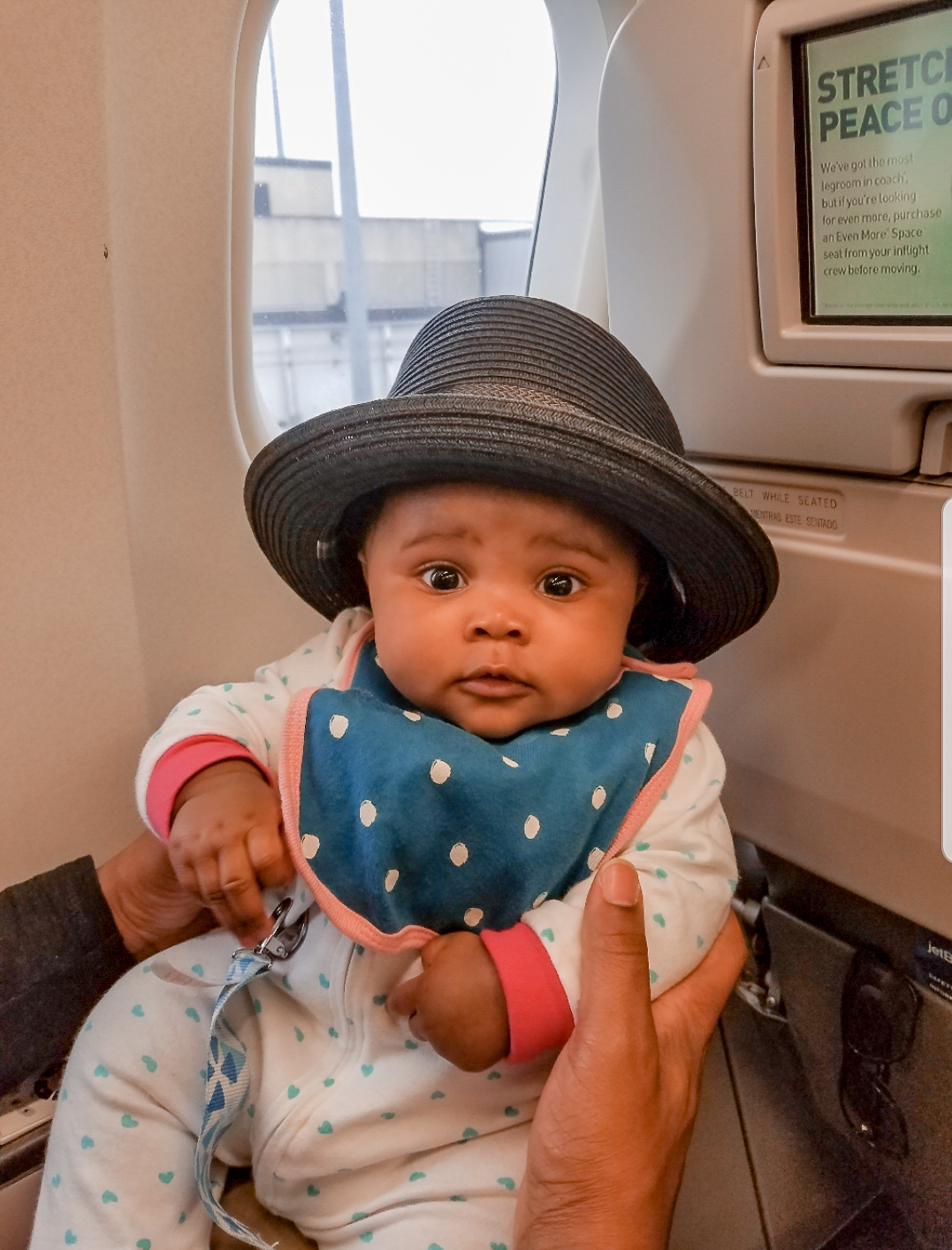The Ultimate Guide to Flying with a Baby
The thought of traveling with a baby can seem extremely overwhelming. I’m sure there are a ton of questions that cross your mind. When’s the best time to fly, what can I bring while flying with my baby? Well mamas, I’m here to answer these questions for you and more. By the time you’re done reading this, you’ll be a pro at traveling with a baby!
Buying the ticket
First things first, there are a couple of decisions you need to make while purchasing your ticket.
- When is the best time to fly?
Morning flights between 9am and 12pm are normally the best time to fly with your baby. Most babies wake up in the morning between 6 and 7 am and if you take into consideration that you should be at the airport 1.5 hours before the flight, the earliest flight that would be easiest for your baby is 9am.
Morning flights tend to disrupt babies schedules less compared to late flights. I’ve done both and wouldn’t recommend flights before 9am or after 6pm.

- Where should I sit on the plane with my baby?
As much as everyone loves the window seat, it’s probably not ideal for either you or anyone sitting in your row. Since you’ll most likely have to get up a couple of times during the flight, the aisle seat is your best option.
With changing dirty diapers, walking around to soothe your baby or nursing/pumping in a private area (if that’s what you choose to do), you’d hate to have to constantly ask people to get up.
- Lap seat or purchase a seat?

Infants under the age of two can travel for free on an adult’s lap. This is a great way to save money while traveling. As your baby gets older, bigger and less patient, it may be best to purchase a seat.
If you buy a ticket for your baby, you’ll need to bring an FAA approved car seat. Make sure you research your airline’s guidelines as well.
Going Through TSA

I highly recommend purchasing TSA precheck. With very short waiting times and less items that you have to remove, it makes going through TSA a breeze. It costs $85 for five years and you’ll just need to apply online and complete an in-person background check.
Whether you have TSA precheck or not, formula and breastmilk might be screened separately from your carry-on. TSA officers may do an x-ray screening of the liquid or ask you to open the container. You can inform the TSA officer if you don’t want the milk to be opened or x-rayed although you may have to go through additional screening procedures.
What to carry on
In addition to what you normally pack in your diaper bag, you’ll need to pack these additional items:
Nursing pillow-Not only does the nursing pillow make breastfeeding more comfortable, it also makes lap travel comfortable as well. If your baby is small enough, you can just lay your baby across the nursing pillow while they sleep. I also find it more comfortable to rest your elbows on the pillow than the arm chair.
Copy of Birth Certificate-Some airlines ask to provide some form of identification for your baby. They usually don’t do this on domestic travel, but it’s good to have a copy just in case.
Carrier- I find that it’s easier to wear your baby in a carrier while walking around the airport and getting through the aisles on the plane.
What to do with your stroller
If you are bringing your stroller, many airlines allow you to check one stroller and car seat at no cost. You can either check the stroller at the ticket counter or at the gate. What you decide depends on if you want to use the stroller to get through the airport or to not be bothered with it and to carry your baby.
If you check the stroller at the ticket counter, you’ll go to baggage claim to pick it up after you land. If you check it at the gate, you’ll pick it up at the arrival gate.
I also recommend bringing a lightweight umbrella stroller if your baby is big enough to use it. They are so much easier to travel with.
Boarding the flight

Airlines usually allow people who need a little extra boarding time, including parents with young kids to board towards the beginning of the boarding process. I normally take advantage of this so I can get situated, change diapers prior to take-off, and get everything prepped.
Some people also like boarding at the end of the flight because it’s less time that you have to entertain your baby while everyone else is boarding.
Take off

If I get lucky, I’m able to time feedings during take-off and landing. Having your baby suck on a bottle during take-off eases the ear pressure as you’re ascending which makes for a less fussy baby. A pacifier also helps with this.
Make sure you bring some type of entertainment for your baby, whether it’s special toys, books or baby shows on a tablet.
I hope this helps you have a smooth flight with your baby! Let me know in the comments below how your first flight goes!

Comments are closed.

Natalie
October 29, 2019 at 7:10 pmThanks for these great tips. I’m going to be flying with my son soon and I’m so nervous. He will be one and he’s such a busy little guy.